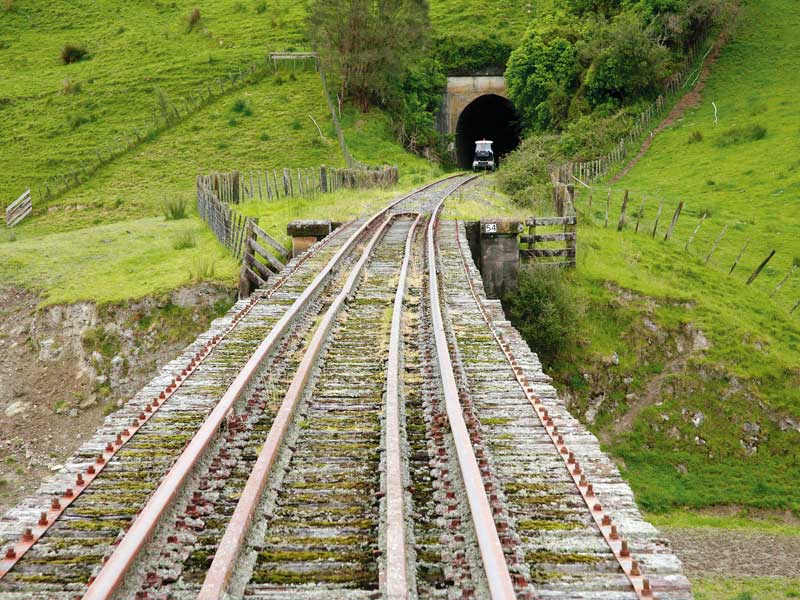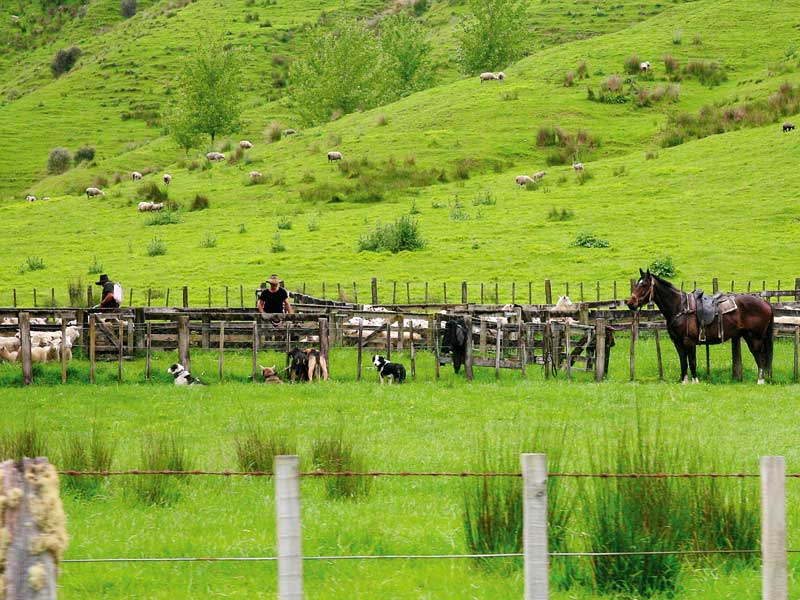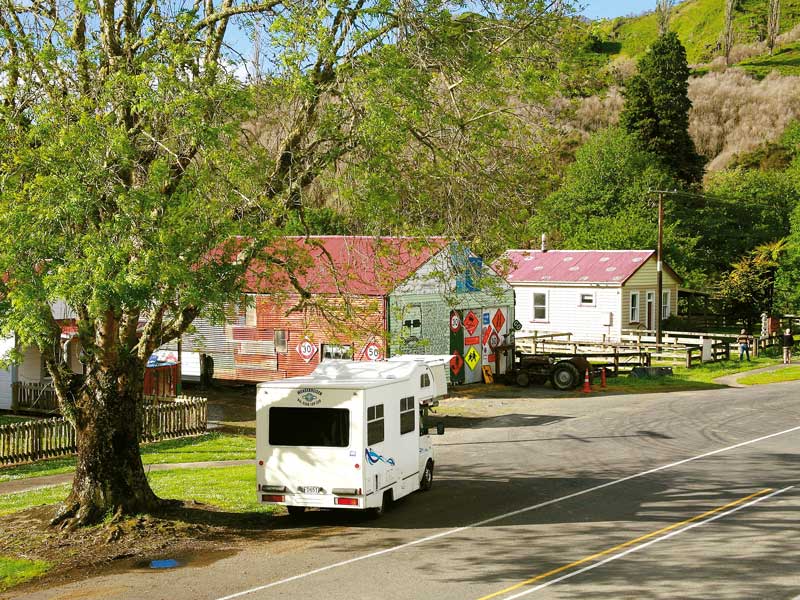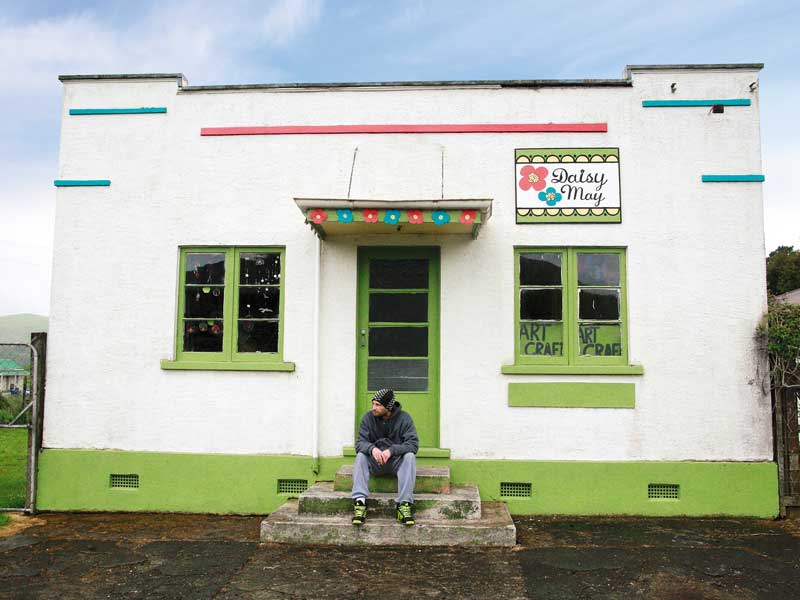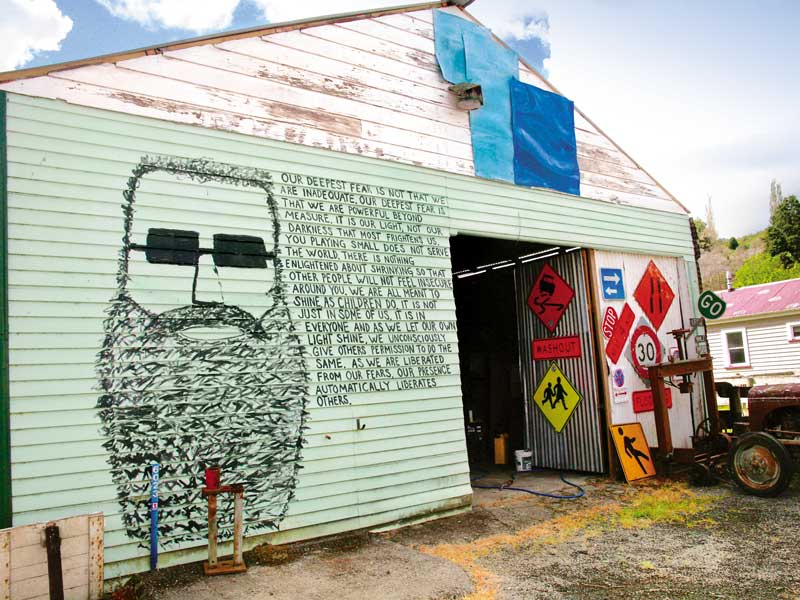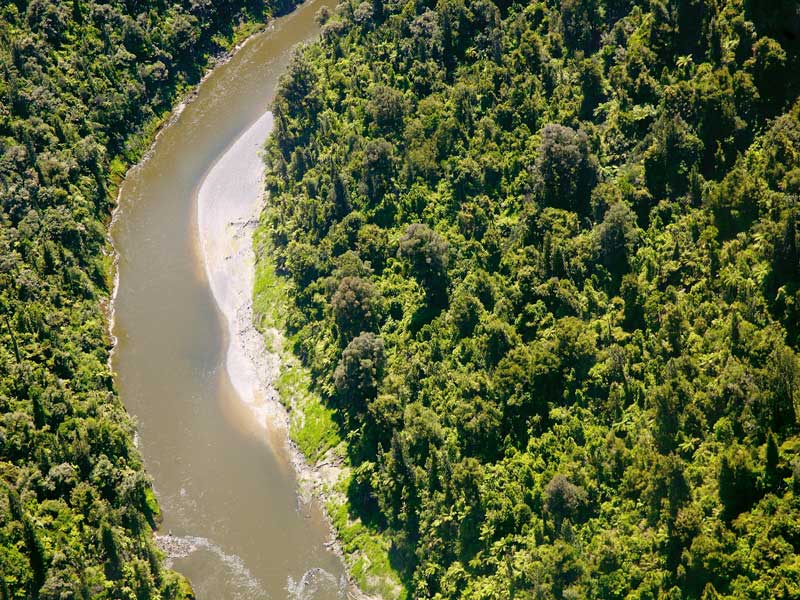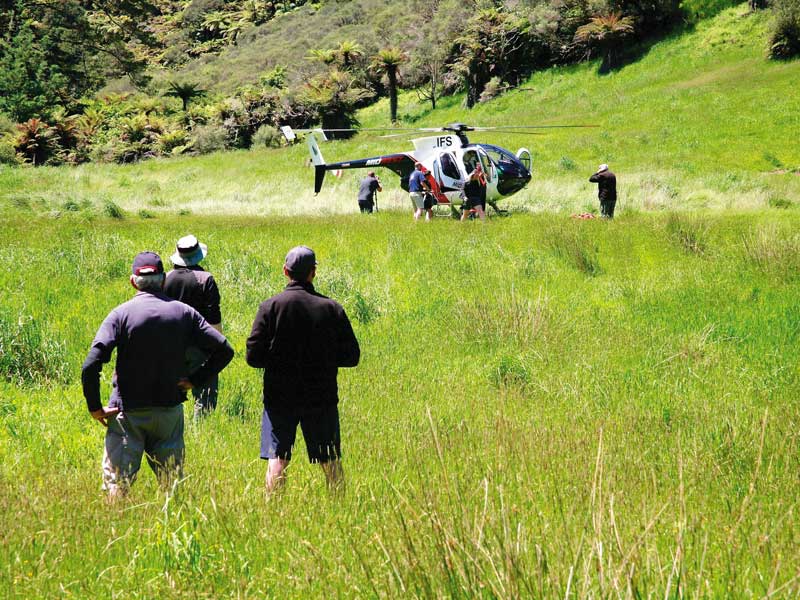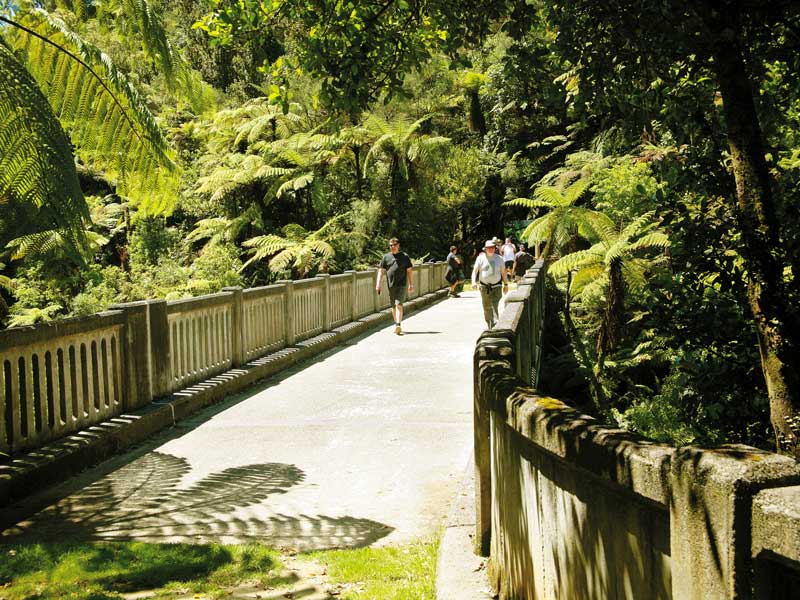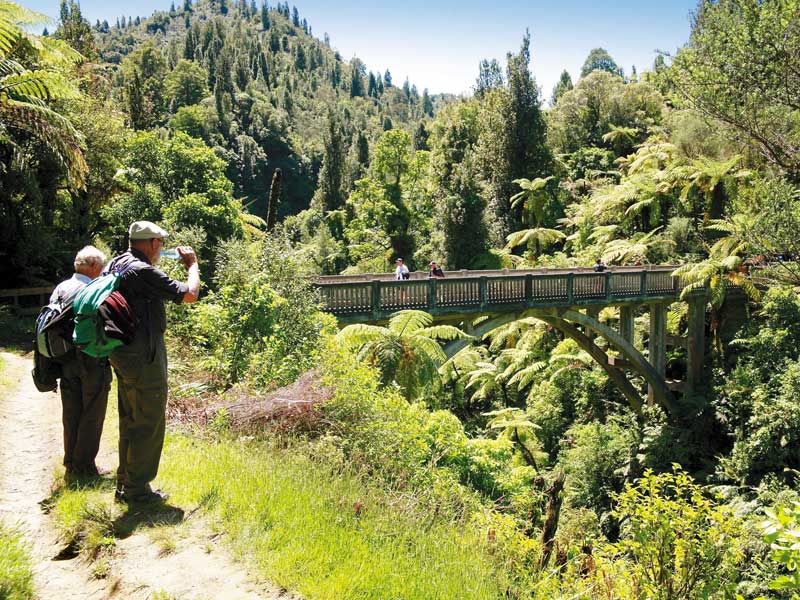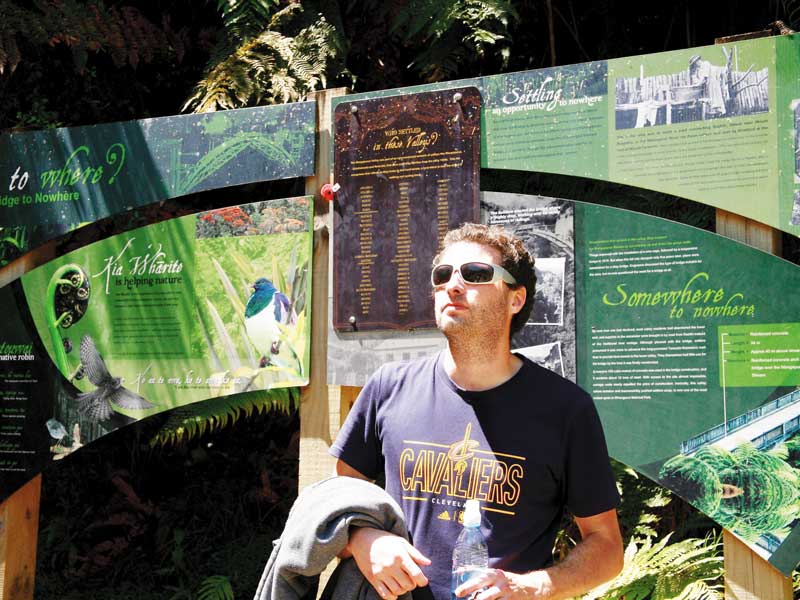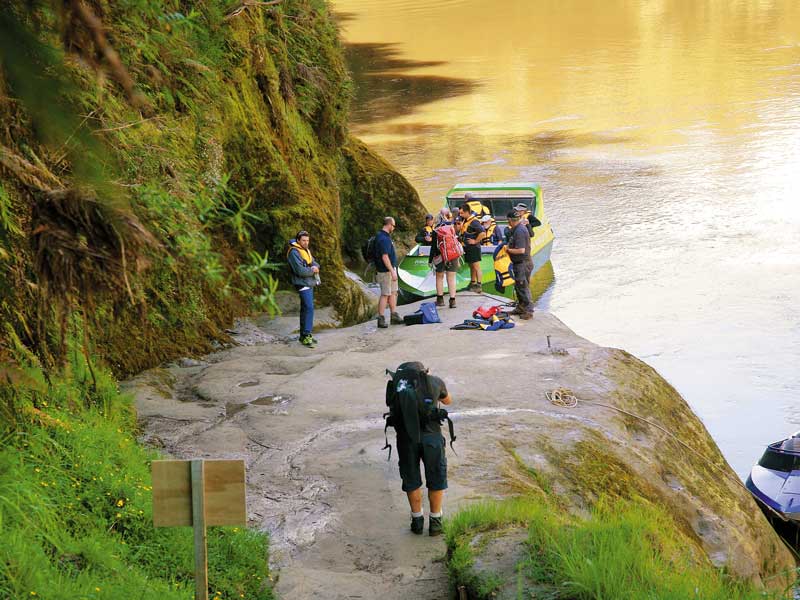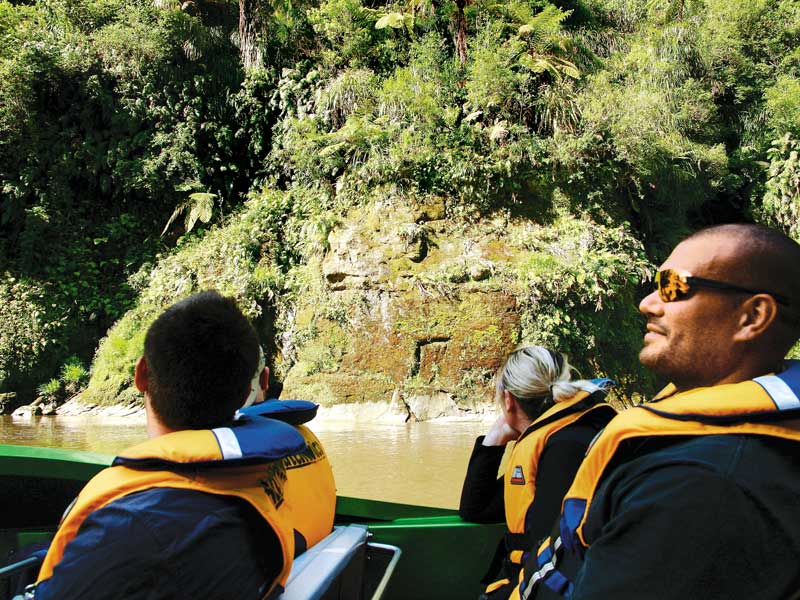In the 1980s when my son Todd was a youngster, we rode numerous steam train excursions along the remote Stratford to Okahukura Line to Taumarunui and occasionally beyond.
They were happy memories, but sadly time marches on, little boys grow up to become big boys and railway lines close, relegating both the trains and those special time-bound memories to history.
In November last year we revisited those precious memories with Forgotten World Adventures (FWA) on one of their premium tours over two days called The Expedition. Although the magic of riding behind a steam locomotive in a heritage wooden carriage was missing, there were two features on this trip that more than made up for it – a helicopter flight and a jet boat ride.
It was overcast when we set off from Taumarunui in the shuttle bus to join our convoy of rail carts parked at the FWA depot. Situated just short of the old combined rail and road bridge at Okahukura, this is where the now rusty SOL railway lines part company with the Main Trunk Line.
There were two separate excursions that day, so while we waited for the first convoy to put some distance between us, our guide Luke kept us entertained with the history of the line. Following the safety brief we were off on the first stage of our expedition, the Twenty Tunnels tour.
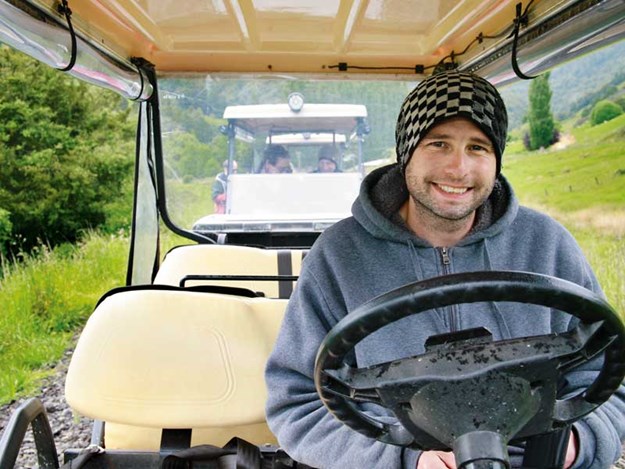 |
Todd on the Twenty Tunnels tour |
Todd got to ‘drive’ the rail cart while I was on video duty, occasionally swapping to keep things interesting. The one part of the trip that left an impression on me was the intricate detail in the railway line itself – from the various striking designs of steel bridges to the brick-lined interiors of the tunnels. Even the embankments and curvature of the rails spoke of the incredible skill of bygone engineers and workmen who toiled relentlessly on this line against all odds.
At Matiere, the first of the ghost towns, we stopped for morning tea in an old community hall. Further along the line there were more ghost towns, their histories immortalised on information boards beside the track. Of these, Ohura seemed to be the largest, with several old empty houses and businesses marking a time when their communities were thriving.
Whangamomona Hotel
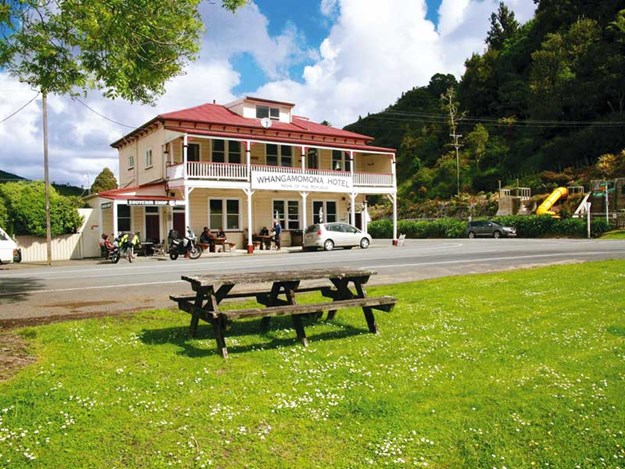 |
Hotels like the Whangamomona were once the heart of New Zealand’s small railway communities |
Our overnight accommodation was at the Whangamomona Hotel, a perfect example of those old railway hotels that used to be the heart of small town railway communities across the country: the galvanised iron exterior, a second-floor balcony contained within detailed fret work, heavy large windows that are raised and lowered on heavy cords and pulleys, and large substantial tables recycled from aged timber and old railway sleepers lining the footpath outside the main entrance door.
Topping off the historic rural look were the ashtrays on each table, a simple inverted terracotta flowerpot and of course the row of gumboots outside the main door in various stages of use and abuse. Inside, the décor was equally dated, with old framed photos on the wall, and above the bar a whole wall covered in foreign banknotes from every corner of the world.
Dinner was a simple affair, good country tucker in generous portions. We opted for a hamburger that was so big it covered the entire plate. Needless to say, we both slept very well indeed that night.
The Helicopter Flight
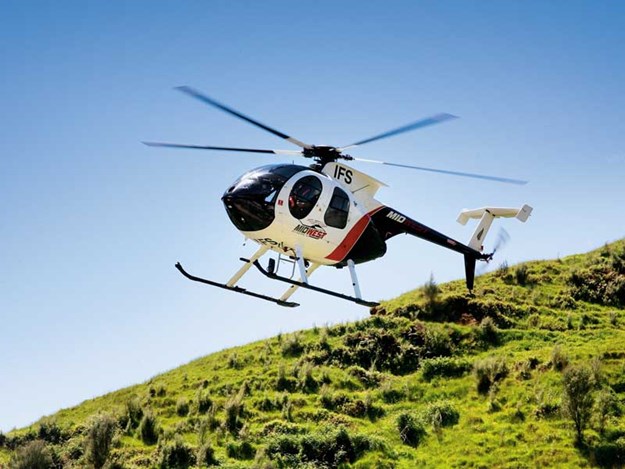
Following a hearty country breakfast we all gathered at the rear of the hotel to wait for the helicopter. Our group was split into two, Todd and I opting for the second flight. Looking down on the remote parts of the Whanganui National Park was extraordinary; the dense canopy of native bush seemed to stretch for miles in every direction.
The highlight for me was flying over the Whanganui River before gently landing in a grassy clearing that was once a busy settlement. Nothing remained to suggest that anyone had ever lived here.
The Bridge to Nowhere
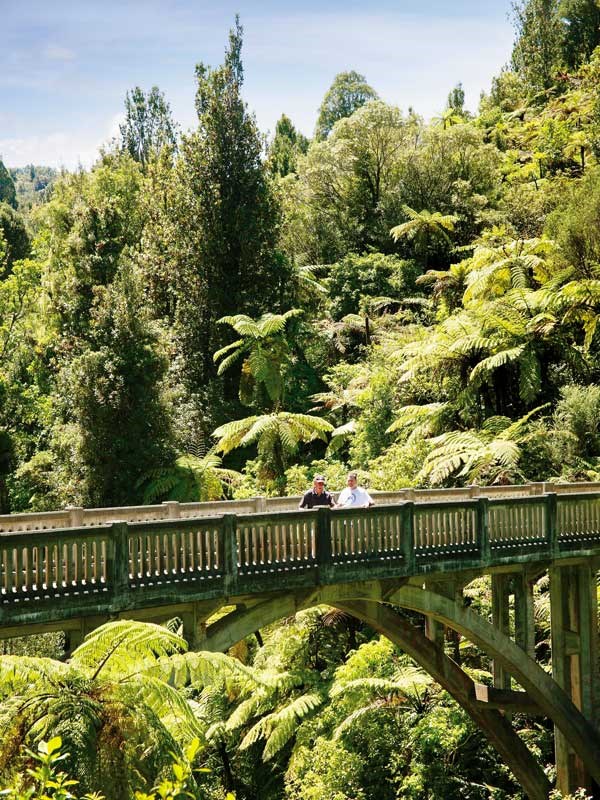 |
The Bridge in its lush setting of trees and ponga |
No matter how many times you see a destination in a photograph, book, or on a screen you can’t really appreciate it until you see in reality. My first glimpse of the ‘Bridge to Nowhere’ as you suddenly emerge from the bush was arresting. You wonder how and why this extraordinary piece of infrastructure, surrounded by trees and ponga, was built in the first place.
The answers appear in detail on the information boards placed behind the picnic table.The bridge is beautifully formed, its graceful arches beneath the deck and the concrete balustrade along both sides still perfectly intact despite being built decades ago.
There is no sign of erosion or age in the concrete; it stands looking as perfect as it did when it was first poured. Judging by all the pictures being taken, it must be the most photographed bridge in the country.
Jet Boating on the Whanganui River
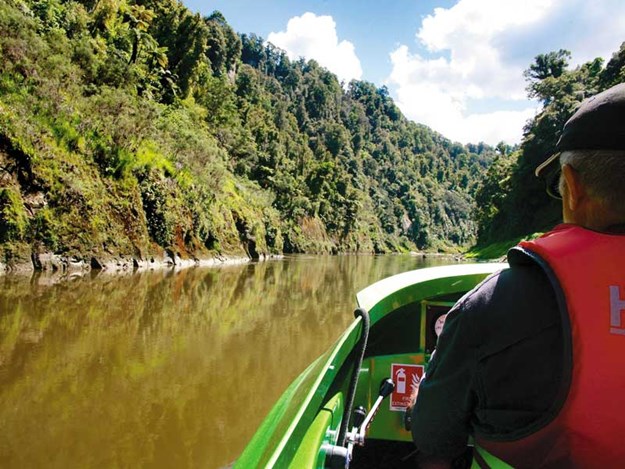
From the bridge it was another hour or so tramping through the bush, with one welcome difference; it was downhill for the most part to the iconic Whanganui River, where a jet boat was waiting for us beside a natural rock jetty.
After walking for at least three hours, what a relief it was to collapse into a soft vinyl seat for the next 116km to Taumarunui. This was the first time I’d been on this section of the river, and in many respects it was more spiritual and scenic than the stretches upstream from Pipiriki and Jerusalem.
You are very aware of the remoteness and the inaccessibility of the river until you reach signs of civilisation as you approach Taumarunui. Apart from the jet boat, there is no other way of seeing this part of the river, a detail that impressed Todd. Throughout the trip, our driver pointed out the various taniwha lairs and river guardians, their spiritual significance not lost within the incredible landscapes.
One special stop made an impression on Todd, at the base of a waterfall cascading down a rocky edge. This was where baby eels could be seen climbing up the face of the rock to reach the river at the top. This was his favourite moment of the trip. And all too soon it was over as we caught our shuttle back to the Forgotten World headquarters.
“That was more like Jurassic World than Forgotten World,” said Todd as we got off the shuttle. I couldn’t have agreed more.
James and Todd were guests of Forgotten World Adventures. For more on The Expedition tour see forgottenworldadventures.co.nz.

